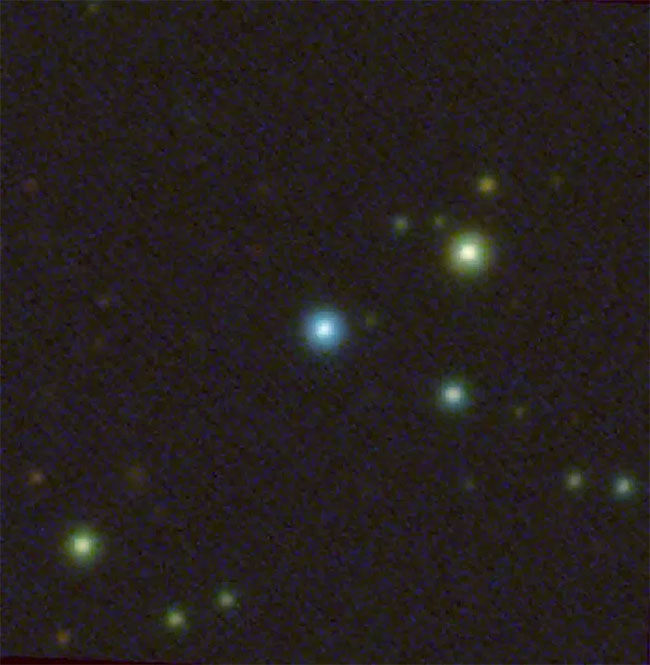Australian Scientists Discover a Supermassive Black Hole with a Mass Equivalent to 3 Billion Suns. They believe this is the fastest-growing black hole in the past 9 billion years.

An image from the SkyMapper Southern Sky Survey shows the growing black hole as a source of blue light. (Photo: Australian National University)
Australian scientists utilized the 1.3-meter SkyMapper Southern Sky Survey telescope in Coonabarabran to identify an extremely bright quasar – a luminous object powered by a supermassive black hole.
This object is named J114447.7-430859.3, abbreviated as J1144, and shines 7,000 times brighter than all the light from the Milky Way, as reported by The Guardian on June 14.
Dr. Christopher Onken from the Australian National University and the lead researcher stated that this supermassive black hole “spans approximately half the universe.”
“The light we see from this growing black hole has traveled to us for about 7 billion years. The Big Bang occurred approximately 13.8 billion years ago,” he said.
According to scientists, J1144 is the brightest quasar in the 9 billion-year history of the universe. They estimate that this supermassive black hole consumes an amount equivalent to Earth every second and has a mass equal to 3 billion suns.
So far, the reason for J1144’s unusual brightness remains unclear. “It is possible that two large galaxies collided, creating a funnel of gas directed toward the black hole,” Dr. Onken suggested.
“We have been searching for these growing black holes since the early 1960s. However, for such a bright object to escape detection for many years is remarkable,” he added.


















































